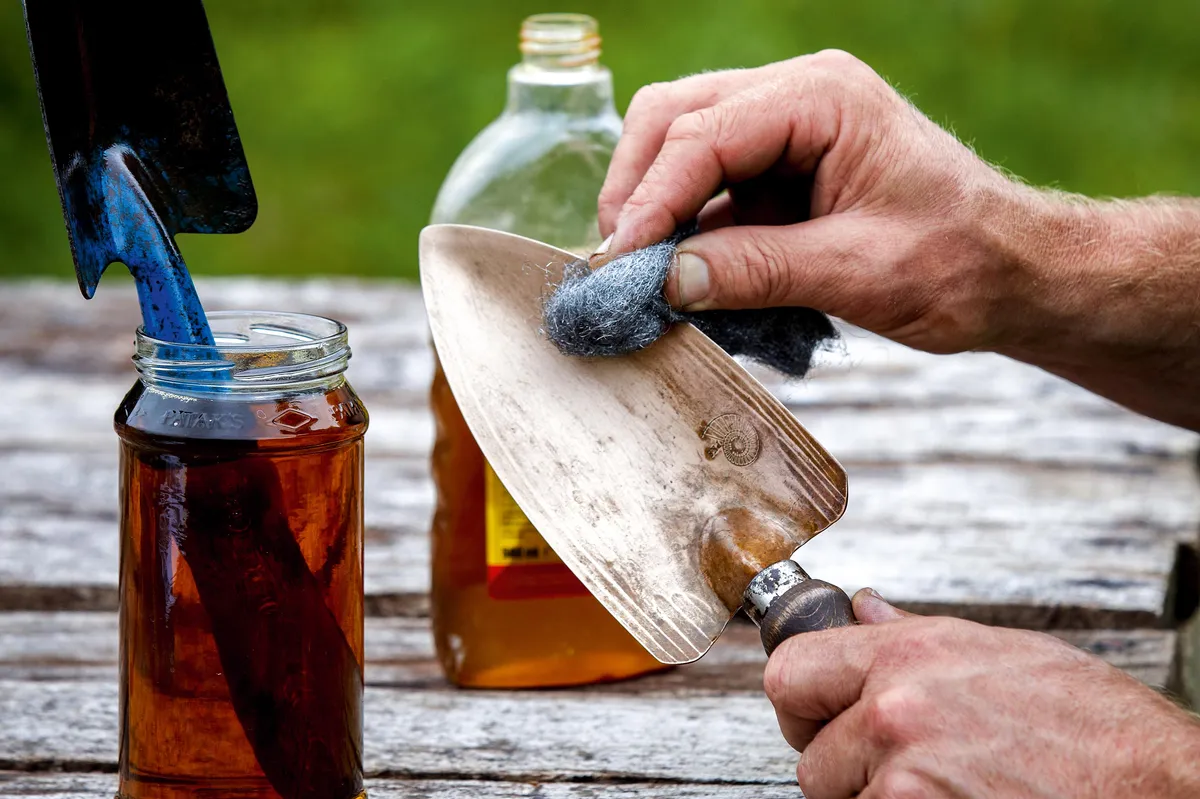On a day-to-day basis, you need only scrape the soil off your tools and quickly wipe them over with an oily rag or plunge them into an oil and sand bucket, before hanging them up. But they will get rusty and at least a couple of times a year, possibly more if it’s particularly muddy, it’s good to give everything a thorough clean to take off the rust.
Cleaning, removing rust and oiling tools
1
Scrape off the mud
It’s useful to have a wedge-shaped piece of hard wood (traditionally called a ‘man’) to scape off most of the mud from rusty and over-used tools.

2
Wash the tools
An old galvanised water tank, or even a dustbin or bucket positioned right by the shed is ideal for washing tools. Scrub handles and tool ends with a stiff scrubbing brush, then place the tools in a warm place to make sure they are thoroughly dry.
3
Rub the handles down with fine sandpaper
- Buy now from Wickes (£4)
Any roughness on handles (washing can lift the grain of the wood) can be rubbed down with fine sandpaper.
4
Use wire wool
- Buy now from Toolstation (£1.89)

Any rust on the steel should be removed with medium-grade steel wool.
5
Apply oil
Apply linseed or tung oil to the wooden handles and metal heads, using a soft rag. You can use either raw or boiled linseed oil, but boiled often has driers added to it, and is lighter so it will dry more quickly. Hand tools can even be soaked in oil overnight, to feed and preserve the wood. Take out the following day, wipe off any excess oil and leave to dry.
Don't!
Whatever you do, don’t be tempted to store oily rags in bundles in hot sheds as they can easily combust. Instead, you should either keep them in a tin, with a lid, somewhere cool, or spread them out to dry between uses.